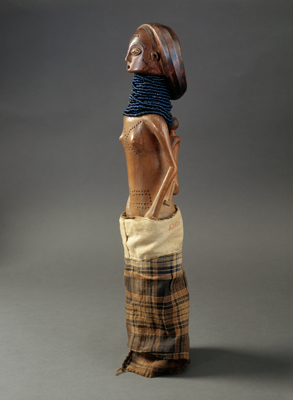Embedded within our Collections Galleries, the University Collections Gallery will present works from Harvard’s other museums. This different display context will spark expanded dialogues between these objects and those held by the Harvard Art Museums. As we recently reported, the inaugural installation for this gallery is being guest curated by Kristina Van Dyke, and will feature African objects from Harvard’s Peabody Museum of Archaeology and Ethnology.
“This is an exciting installation for the Harvard Art Museums,” said David Odo, director of student programs and research curator of university collections initiatives for the Division of Academic and Public Programs, at the Harvard Art Museums. “The Peabody Museum’s spectacular collection of African objects will allow students, scholars, and visitors to appreciate these works in a new context. We also hope that their presence in the gallery will inspire new thinking about the Harvard Art Museums’ permanent installations.”
Founded in 1866, the Peabody Museum holds the largest collection of archaeology and ethnology in the Western Hemisphere—a collection that comprises approximately 1.2 million objects tracing the history and culture of various peoples from around the world. “This collaboration with the Harvard Art Museums gives us a chance to show some of the best of our African collections in a new space, and to consider these works from an art historical, rather than an anthropological, perspective,” said Diana Loren, director of academic partnerships and museum curator at the Peabody.
Van Dyke has organized the gallery around a key theme in African art: assemblage. “African artists tend to privilege parts over the whole; in African aesthetics, there is a comfort level with parts being parts and not an insistence on the whole,” she explained. “African art can be very demanding, asking you to fuse things together physically or conceptually. It asks you either to resolve or to keep the different parts in tension.”
A wooden Kuba cup that will be featured in the installation is a great example of this tension. The cup doubles as a sculpture of a female figure; its stem represents a woman’s body, and the vessel portrays her head. The unresolved relationship between part and whole is seen in the range of 19th- and 20th-century African works that will be on display, in objects such as power bundles from Liberia, curative necklaces from Mozambique, and women’s girdle ornaments from the Congo.
Van Dyke curated the first collaborative exhibition between the Harvard Art Museums and the Peabody Museum while serving as a curatorial intern during her graduate studies. And with her recent installation in the museums’ University Collections Gallery, she is once again bridging the collections of these two museums. “The experience in the University Collections Gallery should make visitors think differently about art,” said Van Dyke, “and to think also about the properties of objects that one is encountering and what makes these objects similar or different to adjacent collections.”

